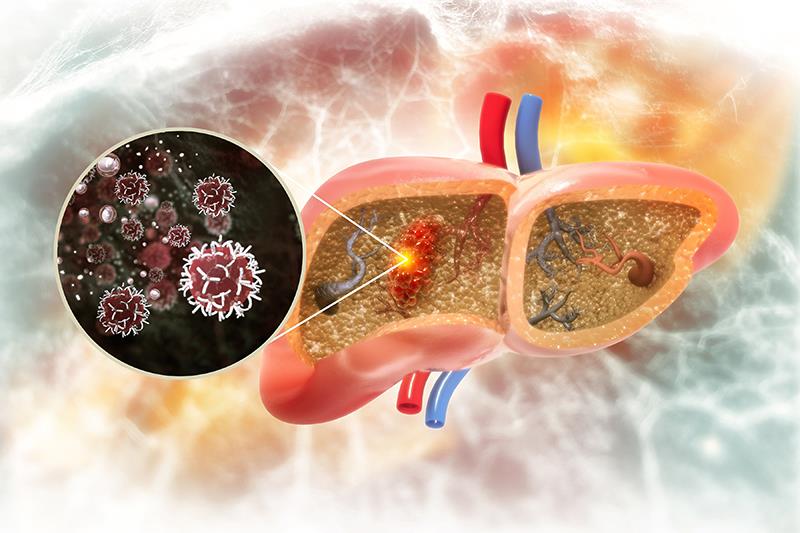First-line nivolumab-ipilimumab therapy extends survival in unresected HCC





Treatment with nivolumab plus ipilimumab in the frontline setting provides clinically meaningful overall survival (OS) benefit compared with lenvatinib or sorafenib to patients with unresectable hepatocellular carcinoma (HCC) who were naive to systemic therapy, according to data from the phase III CheckMate 9DW study presented at ASCO GI 2025.
In addition, the nivolumab-ipilimumab combination therapy demonstrates high response rates and has manageable safety.
“In CheckMate 9DW, nivolumab [plus] ipilimumab demonstrated clinical benefit in terms of [improved] OS, higher objective response rate [ORR], and higher complete response [CR] rate, and also [had] an acceptable safety profile,” said lead author Dr Masatoshi Kudo, professor and chair of the Department of Gastroenterology and Hepatology at Kindai University in Osaka, Japan.
At a median follow-up of 35.2 months, patients treated with nivolumab plus ipilimumab achieved a median OS of 23.7 months (95 percent confidence interval [CI], 18.8–29.4) as opposed to 20.6 months (95 percent CI, 17.5–22.5) in those treated with lenvatinib or sorafenib (hazard ratio [HR], 0.79, 95 percent CI, 0.65–0.96; p=0.0180). [ASCO GI 2025, abstract 520]
Patients in the nivolumab plus ipilimumab arm also showed a significantly higher ORR, per blinded independent central review (BICR), of 36 percent (95 percent CI, 31–42) compared with just 13 percent (95 percent CI, 10–17) for those in the lenvatinib/sorafenib arm (p<0.0001).
The median duration of response (DOR) was also significantly longer with nivolumab plus ipilimumab than with lenvatinib/sorafenib (30.4 vs 12.9 percent).
The ORR benefit observed in the combination therapy arm persisted across subgroups. Specifically, ORR per BICR was higher in the nivolumab plus ipilimumab arm than the lenvatinib/sorafenib arm across HCC aetiologies (uninfected: 35 percent vs 8 percent; HBV infected: 25 percent vs 17 percent; HCV infected: 50 percent vs 16 percent).
Similarly, the ORR was higher in patients with Barcelona Clinic Liver Cancer stage ≤B (33 percent vs 13 percent) or stage C (37 percent vs 14 percent).
“These results support nivolumab [plus] ipilimumab as a new first-line standard of care for patients with unresectable HCC,” Kudo said.
Safety profile
The combination therapy demonstrated a safety profile consistent with previous data, with generally manageable adverse effects (AEs) and no new safety signals seen. In addition, most treatment-related AEs were mild in severity (grade 1 or 2) and did not result in treatment cessation.
Among patients treated with nivolumab plus ipilimumab, 12 had treatment-related deaths, but most of these deaths (n=9) occurred in those with severe and underlying liver disease. Furthermore, disease progression per BICR was confirmed in one patient and suspected in three others. [https://www.onclive.com/view/frontline-nivolumab-ipilimumab-prolongs-os-in-unresectable-hcc]
Common treatment-related AEs included hepatobiliary disorders such as immune-mediated hepatitis (2 percent in the combination therapy arm vs 2 percent in the lenvatinib/sorafenib arm). Hypertension was also observed in 2 percent of patients treated with nivolumab plus ipilimumab and in 41 percent of those who received lenvatinib or sorafenib.
CheckMate 9DW was a phase III randomized, open-label trial that investigated the frontline combination of PD-1 inhibitor nivolumab and CTLA-4 inhibitor ipilimumab versus the standard of care TKIs lenvatinib and sorafenib in patients with unresectable HCC.
Eligible participants (n=668) were randomly allocated to receive nivolumab 1 mg/kg plus ipilimumab 3 mg/kg every 3 weeks for up to 4 cycles, followed by nivolumab 480 mg every 4 weeks (n=335), or lenvatinib 8 mg or 12 mg once a day or sorafenib 400 mg twice a day (n=333) until disease progression or unacceptable toxicity. Nivolumab was administered for 2 years maximum.